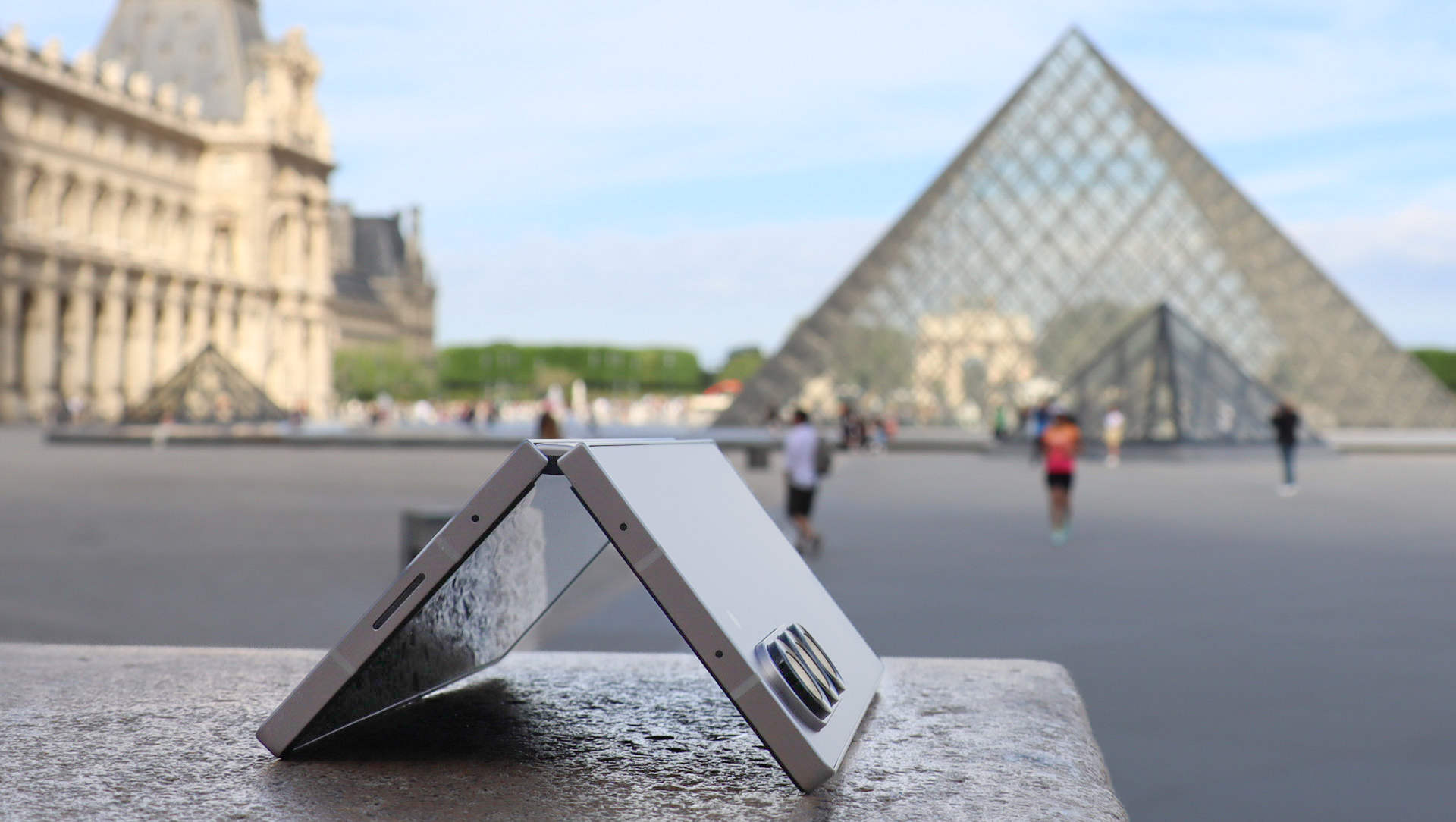Architects are finding new ways to bring natural light into sad, dark offices
Some office buildings are simply not blessed with natural light. Maybe they’re standing in the shadows of something taller. Or perhaps their windows are mostly oriented to the dark north instead of the sunny southwest. Or maybe they’re so big and wide that sunlight can’t find its way into their murky depths. Whatever the reason, the lack of natural light presents problems ranging from additional energy usage to diminished human well-being and productivity. CBT, an architecture firm based in Boston, has been exploring unique ways of solving these problems. Using passive design approaches that require no additional energy, the firm is finding innovative ways to bring more natural light deeper into office buildings. [Photo: Robert Benson/courtesy CBT Architects] There’s no single solution, according to Tyler Lombardi, an associate principal at CBT, but there is an increasingly accessible toolbox of approaches that architects can use to bring more light into buildings, including reflective surfaces and finishes, data-informed adjustments to building facades, and even curving walls that bend light in a space. [Photo: Chuck Choi/courtesy CBT Architects] Lombardi says these approaches have been put to work in recent office projects, including for law firms and financial services companies. He says these industries have tended to prioritize private offices with good views, turning an office building’s perimeter into well-lit spaces and the rest of the floor into a dark pit. “They’re all 90-degree angles and it’s very rigid, ” he says of these projects, noting that many of the firm’s clients are confidential. “We’re trying to find ways to make that space feel more visually connected.” [Photo: Chuck Choi/courtesy CBT Architects] To do so, CBT has altered floor plans to include curving walls that wind their way into the center of a floor. “We’ll use the natural light coming in from a courtyard or a balcony or an exterior window and then we’ll shape the wall so that the light is exposed 40 or 50 yards down,” Lombardi says. Reflective paints or shiny surfaces can also be deployed strategically to milk even more brightness from this distant light. The interventions can be very subtle. Even shadows inside a room can build up. So, working with lighting designers, Lombardi says he’s been on projects that have focused on minute details like the edges of shelving units, which can be beveled and smoothed to cast a shadow line that’s less harsh. [Photo: Robert Benson/courtesy CBT Architects] Technology plays a large role in this work, Lombardi says, with 3D modeling programs capable of performing light and contrast studies while projects are in the design phase. Small changes to wall curves or window heights can translate into significant increases in light at certain times of the day, or different ways of moving light into a room. “You really get into the details of certain nominal dimensions that will work for washing light versus bending light versus reflecting light,” he says. “It can be very technical and very complex, but a successful project may hide those complexities.” [Photo: courtesy CBT Architects] Many of the design interventions that can make a space brighter are actually simple material choices. CBT uses its physical modelmaking shop to test out some of these materials, including paints with glossy finishes or metals with various amounts of sheen. “The nature of being in the design world, everyone’s looking for the latest and greatest product or material or strategy or tech tool,” Lombardi says. “When it comes down to some of these architectural principles we have to sometimes remind ourselves, you don’t have to reinvent the wheel every time.”
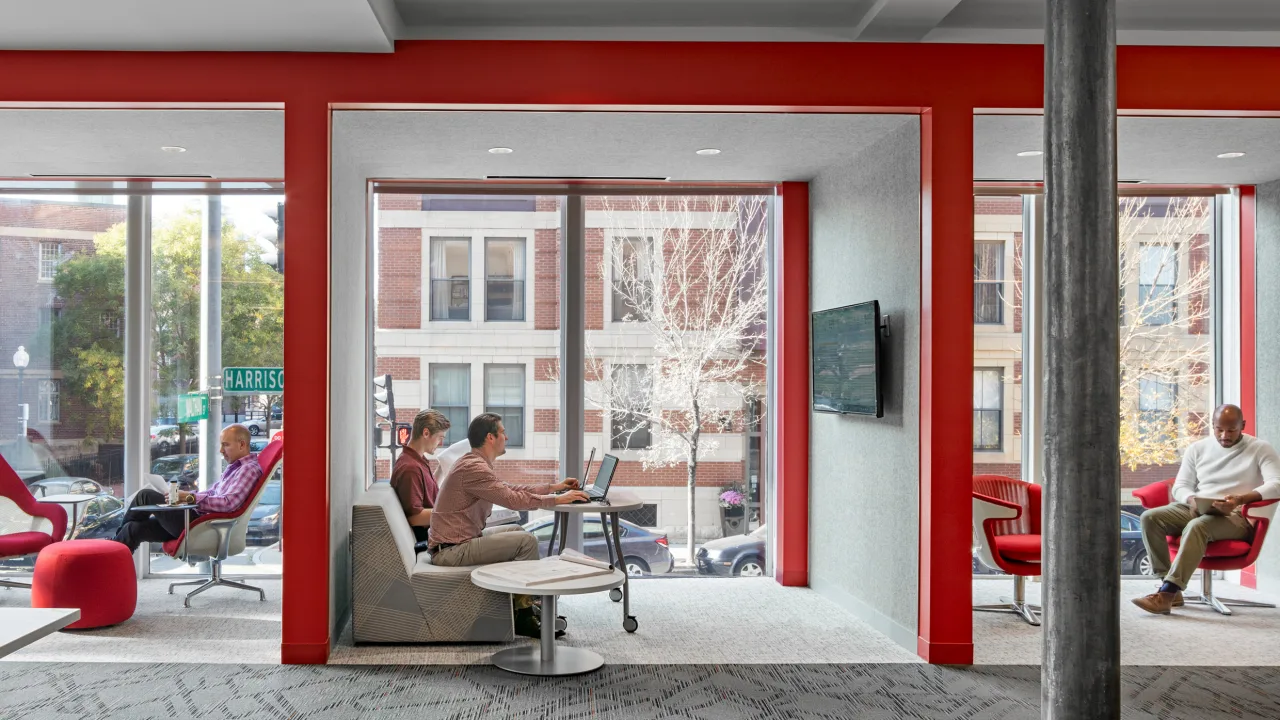
Some office buildings are simply not blessed with natural light. Maybe they’re standing in the shadows of something taller. Or perhaps their windows are mostly oriented to the dark north instead of the sunny southwest. Or maybe they’re so big and wide that sunlight can’t find its way into their murky depths. Whatever the reason, the lack of natural light presents problems ranging from additional energy usage to diminished human well-being and productivity.
CBT, an architecture firm based in Boston, has been exploring unique ways of solving these problems. Using passive design approaches that require no additional energy, the firm is finding innovative ways to bring more natural light deeper into office buildings.
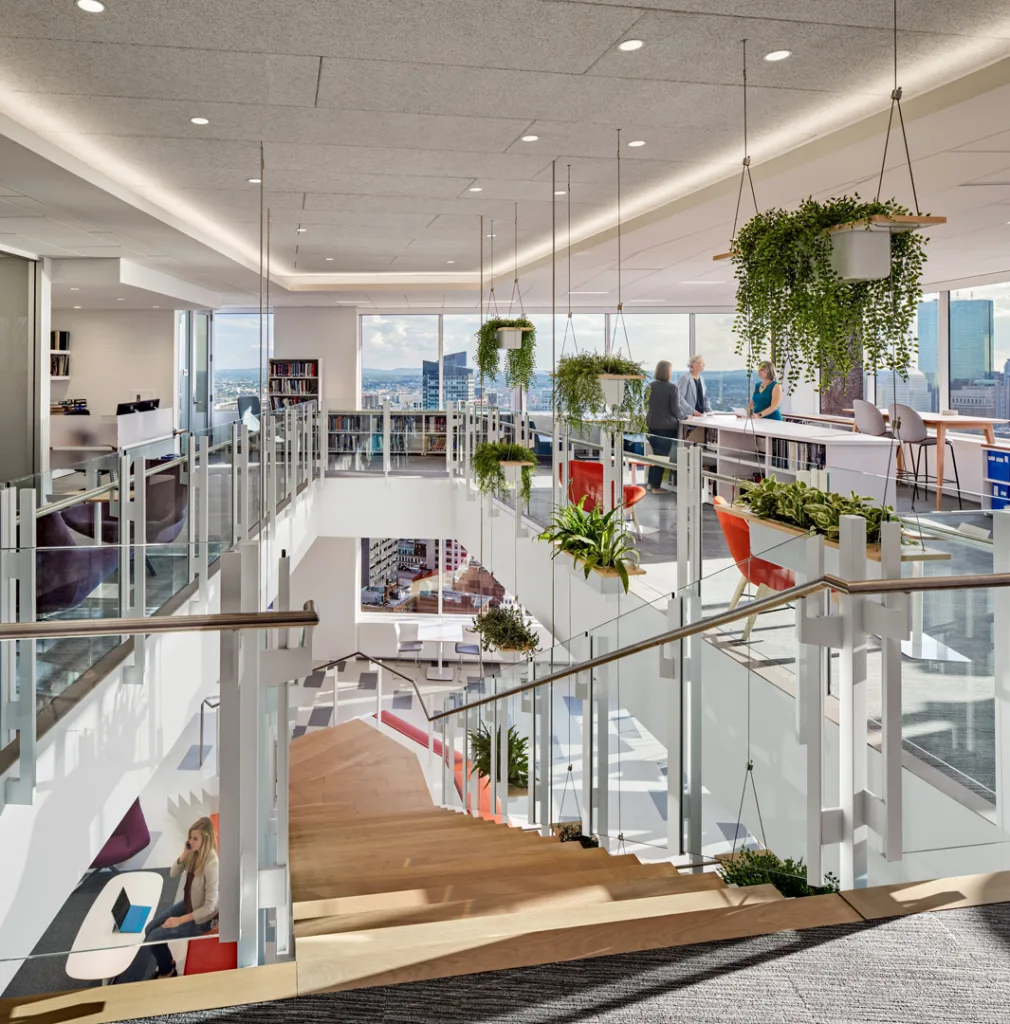
There’s no single solution, according to Tyler Lombardi, an associate principal at CBT, but there is an increasingly accessible toolbox of approaches that architects can use to bring more light into buildings, including reflective surfaces and finishes, data-informed adjustments to building facades, and even curving walls that bend light in a space.
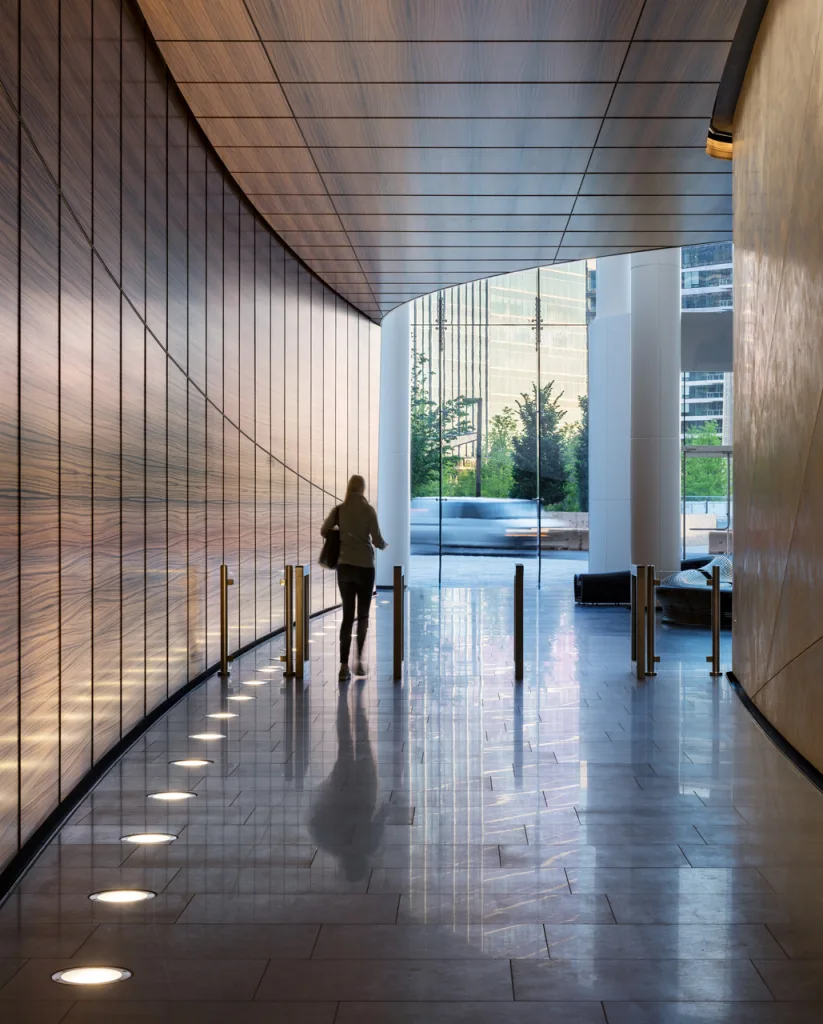
Lombardi says these approaches have been put to work in recent office projects, including for law firms and financial services companies. He says these industries have tended to prioritize private offices with good views, turning an office building’s perimeter into well-lit spaces and the rest of the floor into a dark pit. “They’re all 90-degree angles and it’s very rigid, ” he says of these projects, noting that many of the firm’s clients are confidential. “We’re trying to find ways to make that space feel more visually connected.”
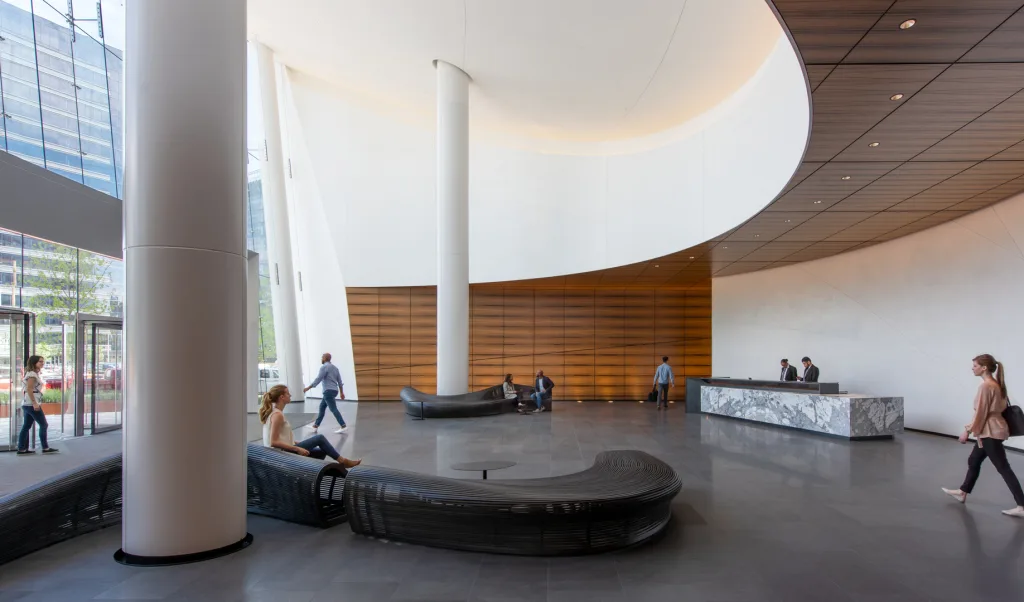
To do so, CBT has altered floor plans to include curving walls that wind their way into the center of a floor. “We’ll use the natural light coming in from a courtyard or a balcony or an exterior window and then we’ll shape the wall so that the light is exposed 40 or 50 yards down,” Lombardi says. Reflective paints or shiny surfaces can also be deployed strategically to milk even more brightness from this distant light.
The interventions can be very subtle. Even shadows inside a room can build up. So, working with lighting designers, Lombardi says he’s been on projects that have focused on minute details like the edges of shelving units, which can be beveled and smoothed to cast a shadow line that’s less harsh.
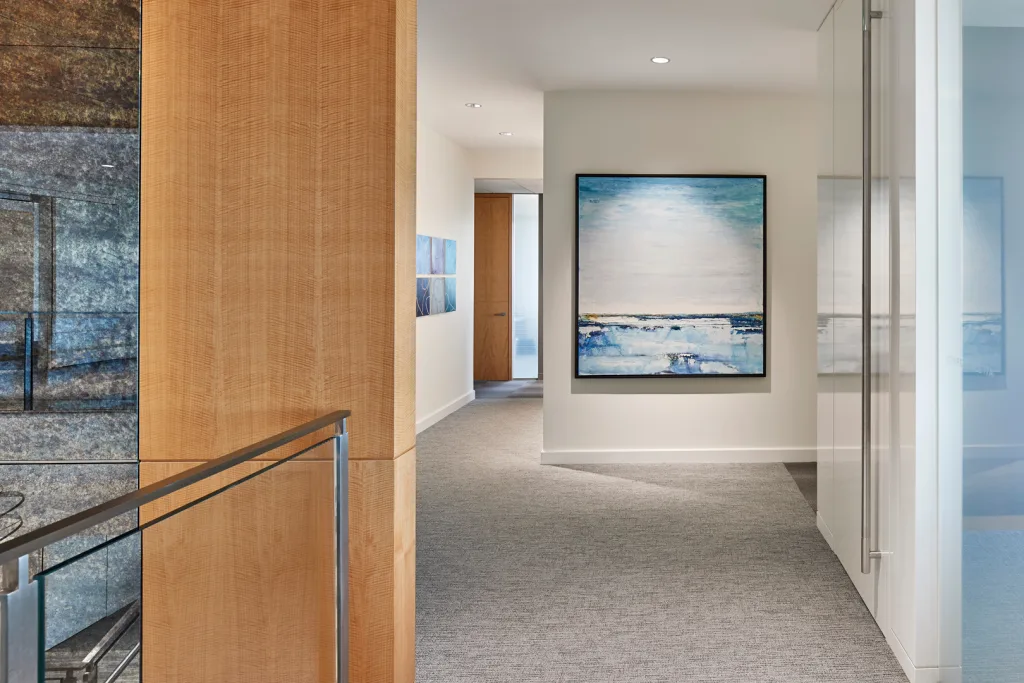
Technology plays a large role in this work, Lombardi says, with 3D modeling programs capable of performing light and contrast studies while projects are in the design phase. Small changes to wall curves or window heights can translate into significant increases in light at certain times of the day, or different ways of moving light into a room. “You really get into the details of certain nominal dimensions that will work for washing light versus bending light versus reflecting light,” he says. “It can be very technical and very complex, but a successful project may hide those complexities.”
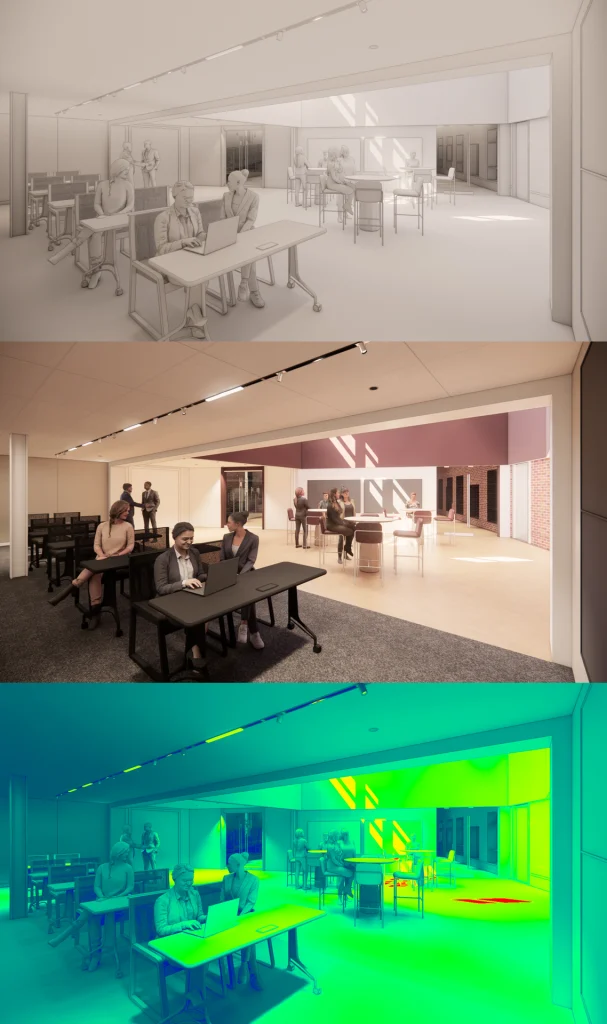
Many of the design interventions that can make a space brighter are actually simple material choices. CBT uses its physical modelmaking shop to test out some of these materials, including paints with glossy finishes or metals with various amounts of sheen. “The nature of being in the design world, everyone’s looking for the latest and greatest product or material or strategy or tech tool,” Lombardi says. “When it comes down to some of these architectural principles we have to sometimes remind ourselves, you don’t have to reinvent the wheel every time.”




























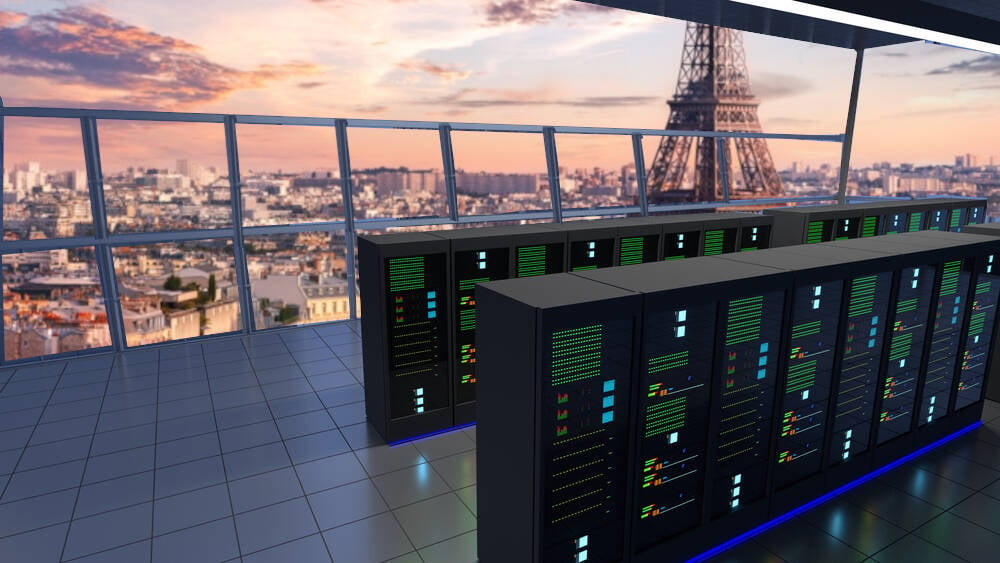















































































































































![[The AI Show Episode 148]: Microsoft’s Quiet AI Layoffs, US Copyright Office’s Bombshell AI Guidance, 2025 State of Marketing AI Report, and OpenAI Codex](https://www.marketingaiinstitute.com/hubfs/ep%20148%20cover%20%281%29.png)


![[The AI Show Episode 146]: Rise of “AI-First” Companies, AI Job Disruption, GPT-4o Update Gets Rolled Back, How Big Consulting Firms Use AI, and Meta AI App](https://www.marketingaiinstitute.com/hubfs/ep%20146%20cover.png)






















































































































































































-(1).jpg?width=1920&height=1920&fit=bounds&quality=70&format=jpg&auto=webp#)

























































.jpg?#)




.png?width=1920&height=1920&fit=bounds&quality=70&format=jpg&auto=webp#)






















































































































![What’s new in Android’s May 2025 Google System Updates [U: 5/19]](https://i0.wp.com/9to5google.com/wp-content/uploads/sites/4/2025/01/google-play-services-1.jpg?resize=1200%2C628&quality=82&strip=all&ssl=1)

















![Apple's iPhone Shift to India Accelerates With $1.5 Billion Foxconn Investment [Report]](https://www.iclarified.com/images/news/97357/97357/97357-640.jpg)
![Apple Releases iPadOS 17.7.8 for Older Devices [Download]](https://www.iclarified.com/images/news/97358/97358/97358-640.jpg)














